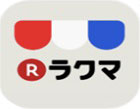

 Credit: iStock Credit: iStock |
World’s oldest languages and their origins
The world is home to more than 7,100 languages today, with nearly 40% endangered. These languages weave together millennia of human history, making the quest to identify the oldest language a fascinating endeavour.
Many early written languages, such as Sumerian, Akkadian, and Egyptian, used cuneiform script and date back at least 4,600 years. Egyptian hieroglyphs, like those in Pharaoh Seth-Peribsen's tomb, contain the earliest-known complete sentences. Historians agree these are among the oldest languages with clear written records, though all are now extinct.
For the oldest still-spoken languages, Hebrew and Arabic are notable. Their written evidence dates back around 3,000 years, and they belong to the Afroasiatic language family, which traces back 20,000 to 10,000 years. This makes Afroasiatic widely accepted as the oldest language family, despite debates over the exact timelines.
Also, the other oldest languages, such as Chinese, Sanskrit, and Tamil, sparks ongoing debate. As per the histories, Chinese likely emerged from Proto-Sino-Tibetan around 4,500 years ago, with the earliest written records dating back about 3,300 years, whereas Sanskrit's written records date to 1500-1200 BCE, part of ancient Hindu texts, although it is no longer a first language today.
Tamil, spoken by about 85 million people, has documented literature dating back at least 2,000 years, with the Tolkāppiyam possibly as old as 7,000-2,800 years. These discussions highlight the challenges in determining the world's oldest languages, and will continue to remain there till no further evidence is found.


 Credit: iStock Credit: iStock |
Egyptian
Egypt is celebrated as one of the world's oldest civilizations, with Egyptian Coptic being its earliest indigenous language. Written records date back to 3400 BC, and Coptic was the main language in Egypt until the late 17th century AD. Today, Coptic is primarily used as the liturgical language of the Coptic Church in Egypt, with only a small number of fluent speakers remaining.


 Credit: iStock Credit: iStock |
Sanskrit
As per the records, Sanskrit's earliest form is found in the Rigveda, a sacred Hindu text. Revered as the 'language of the gods' in Hinduism, Sanskrit plays a pivotal role in understanding ancient Indian history, scriptures, and philosophy. Sanskrit also has a profound influence on numerous languages, particularly in South Asia. Many modern Indian languages, such as Hindi, Bengali, and Marathi, have their roots in Sanskrit and extensively borrow from its vocabulary. Fundamental to Hinduism, Buddhism, and Jainism, Sanskrit serves as the language in which many foundational texts of these religions were composed. This includes the Vedas, the Upanishads, and the Bhagavad Gita.


 Credit: iStock Credit: iStock |
Tamil
Tamil, spoken by 78 million people and recognised as an official language in Sri Lanka and Singapore, is one of the world's oldest languages. Part of the Dravidian family, which includes several native languages of southern and eastern India, Tamil is predominantly spoken in the state of Tamil Nadu and holds official status in India. Inscriptions dating back to the 3rd century BC attest to its ancient roots.


 Credit: iStock Credit: iStock |
Hebrew
Hebrew ceased to be widely spoken around 400 CE but has been preserved as a liturgical language among Jews worldwide. During the 19th and 20th centuries, the rise of Zionism spurred a revival of Hebrew, culminating in its designation as the official language of Israel. Although Modern Hebrew differs from its Biblical form, native speakers can fully understand ancient texts. Additionally, Modern Hebrew has been influenced by various other Jewish languages.


 Credit: iStock Credit: iStock |
Arabic
Arabic, as the language of the Quran, holds sacred significance. It is spoken by approximately 260 million people worldwide and encompasses numerous dialects. Arabic serves as the foundation for languages such as Urdu and Malay, and its influence extends to English, with words like algebra, alcohol, and emir having Arabic origins.


 Credit: iStock Credit: iStock |
Chinese
Chinese is spoken by approximately 1.2 billion people worldwide and belongs to the Sino-Tibetan language family. It encompasses numerous complex dialects. Chinese characters date back approximately 3,000 years, with hieroglyphs tracing their origins to the Shang Dynasty (16th-11th century BC). In 1956, the written script underwent simplification to enhance readability and accessibility.


 Credit: iStock Credit: iStock |
Greek
Greek serves as the official language of Greece and Cyprus and originally developed in ancient Greece and Asia Minor, now part of Turkey. It has an unbroken tradition of written use spanning over 3,000 years, surpassing any other Indo-European languages spoken today. This rich history is categorised into Ancient Greek, Medieval Greek, and Modern Greek stages. Today, Greek is spoken by over 15 million people, primarily in Greece and Cyprus, with sizable Greek-speaking communities also found in countries like the United States and Australia.
Visual Stories

Travel
World’s most scenic yet offbeat destinations

Travel
From Vegas to Ibiza, 10 of the world's best nightlife destinations

Travel
Top 8 Schengen countries issuing the most multiple-entry visas

Travel
Scary voodoo sites to visit across the globe

Travel
Oldest waterfalls on Earth to visit this monsoon

Travel
Unforgettable train journeys across India’s best landscape

Travel
10 most turbulent flight routes to avoid in the world

Travel
10 best lake destinations in the world

Travel
World's 8 most beautiful castles that look straight out of a fairytale

Travel
7 most unique sculptures in the world and where to spot them
Join Us On FacebookClose

Refrain from posting comments that are obscene, defamatory or inflammatory, and do not indulge in personal attacks, name calling or inciting hatred against any community. Help us delete comments that do not follow these guidelines by marking them offensive. Let's work together to keep the conversation civil.
closecomments
Refrain from posting comments that are obscene, defamatory or inflammatory, and do not indulge in personal attacks, name calling or inciting hatred against any community. Help us delete comments that do not follow these guidelines by marking them offensive. Let's work together to keep the conversation civil.
Trending Stories
5 best and cool places Americans can visit on July 4 holiday
Andhra Pradesh: Exploring Gandikota, India's Grand Canyon
CBI raids on passport offices: How do passport scams happen?
These Instagram-able spots in Switzerland will blow up your social media status!
Most energy efficient countries in the world
World’s most scenic yet offbeat destinations
10 best international shopping destinations
Change in visa rules in Australia – how will it impact Indians
IMD issues alerts as Mumbai braces for intensified rainfall
Lake Titicaca: What’s so special about the highest navigable lake in the world?
From around the web
Popular Galleries
World Social Media Day: These Instagram-able spots in Switzerland will blow up your social media status!
TRAVEL TRENDS, SWITZERLAND10 best international shopping destinations
TRAVEL TRENDS, WORLD5 best and cool places Americans can visit on July 4 holiday
TRAVEL TRENDS

 雅虎竞拍
雅虎竞拍 煤炉代买
煤炉代买 paypay商城
paypay商城 乐天二手
乐天二手 日本亚马逊
日本亚马逊 乐天新品
乐天新品 ZOZOTOWN
ZOZOTOWN












Comments (0)